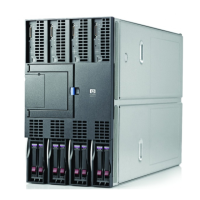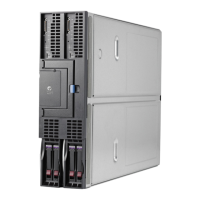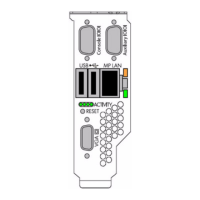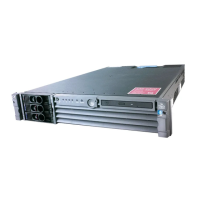Table 4-14 Example of load-balancing algorithms #2 (continued)
frame is transmitted out port 2Packet 2 - Destination MAC address: 00-00-00-00-00-01
Last binary bit = 0000 0001
Method 2: SOURCE-BASED ALGORITHM
frame is transmitted out port 2Packet 1 - Source MAC address: 00-00-00-00-00-03
Last binary bit = 0000 0001
frame is transmitted out port 1Packet 2 - Source MAC address: 00-00-00-00-00-02
Last binary bit = 0000 0000
Method 3: XOR ALGORITHM (best method to use on switch)
frame is transmitted out port 1Packet 1 - Source MAC address: 00-00-00-00-00-03
Last binary bit = 0000 0011
Packet 1 - Destination MAC address: 00-00-00-00-00-01
Last binary bit = 0000 0001
XOR result of binary bits 1 & 1 = 0
frame is transmitted out port 2Packet 2 - Source MAC address: 00-00-00-00-00-02
Last binary bit = 0000 0010
Packet 2 - Destination MAC address: 00-00-00-00-00-01
Last binary bit = 0000 0001
XOR result of binary bits 0 & 1 = 1
The effects of the destination-based algorithm do not indicate a fault in the network port drivers
nor on the switch. Destination-based load balancing is considered a functional FEC/GEC algorithm
because packets between switches may not always use the same destination or source addresses.
Only single-node-to-switch FEC/GEC uses the same destination address (for example, server
team to switch).
The algorithm used for load balancing has no effect on fault tolerance; fault tolerance will function
the same in any implementation.
NOTE: Some switches have the option to change the load-balancing algorithm. In such cases,
HP advises using the algorithms in this order of preference: XOR (both), source-based, and
destination-based.
Switch Vendor Port Trunking Technology Supported by SLB
SLB is designed to support most switch vendors’ implementation of Port Trunking technology
(even if the technology is called by another name). The most important requirement is that SLB
only supports Port Trunking technology that has been manually enabled. SLB does not support
any kind of Port Trunking auto-configuration protocols (for example, LACP, PAgP). If automatic
Port Trunking is required, 802.3ad Dynamic team type should be used with an IEEE 802.3ad
Dynamic capable switch.
Examples of switch vendor Port Trunking technologies:
• Any switch that supports Static 802.3ad (no LACP)
• Extreme network’s load sharing
• HP ProCurve Trunking (or Port Trunking)
• HP GbE & GbE2 Port Trunking
• Nortel MultiLink Trunking (MLT), but not Split MultiLink Trunking (SMLT)
Types of HP Integrity Network Adapter Teams 71

